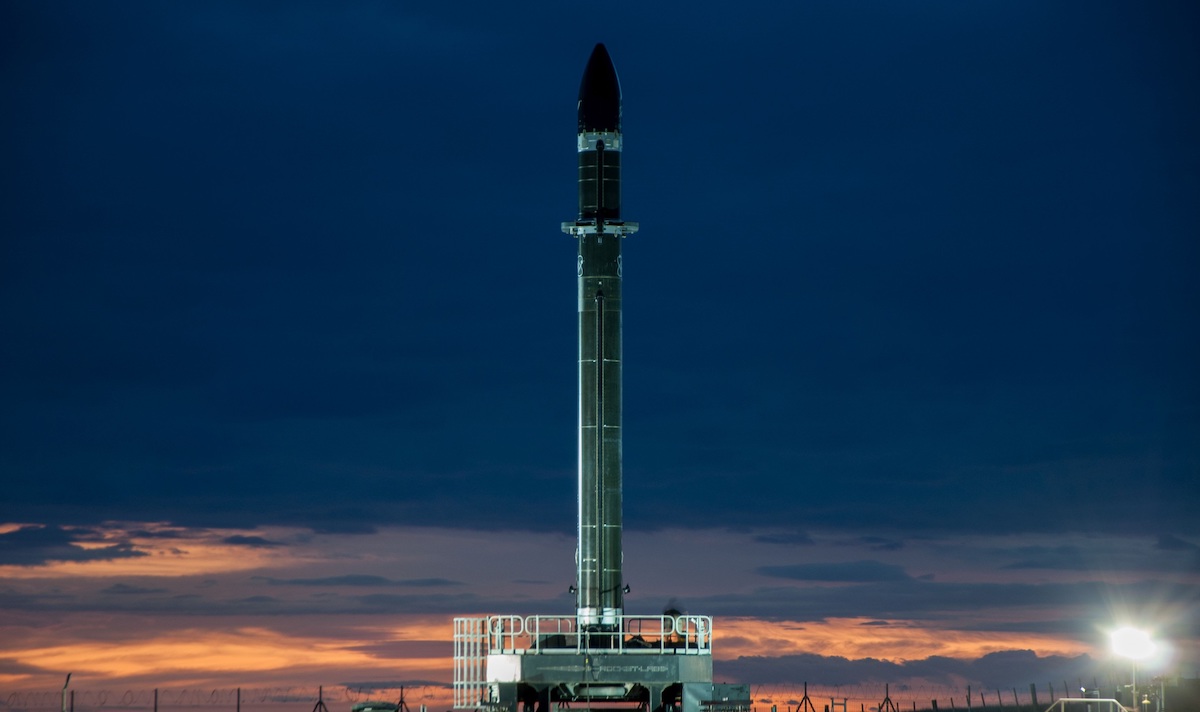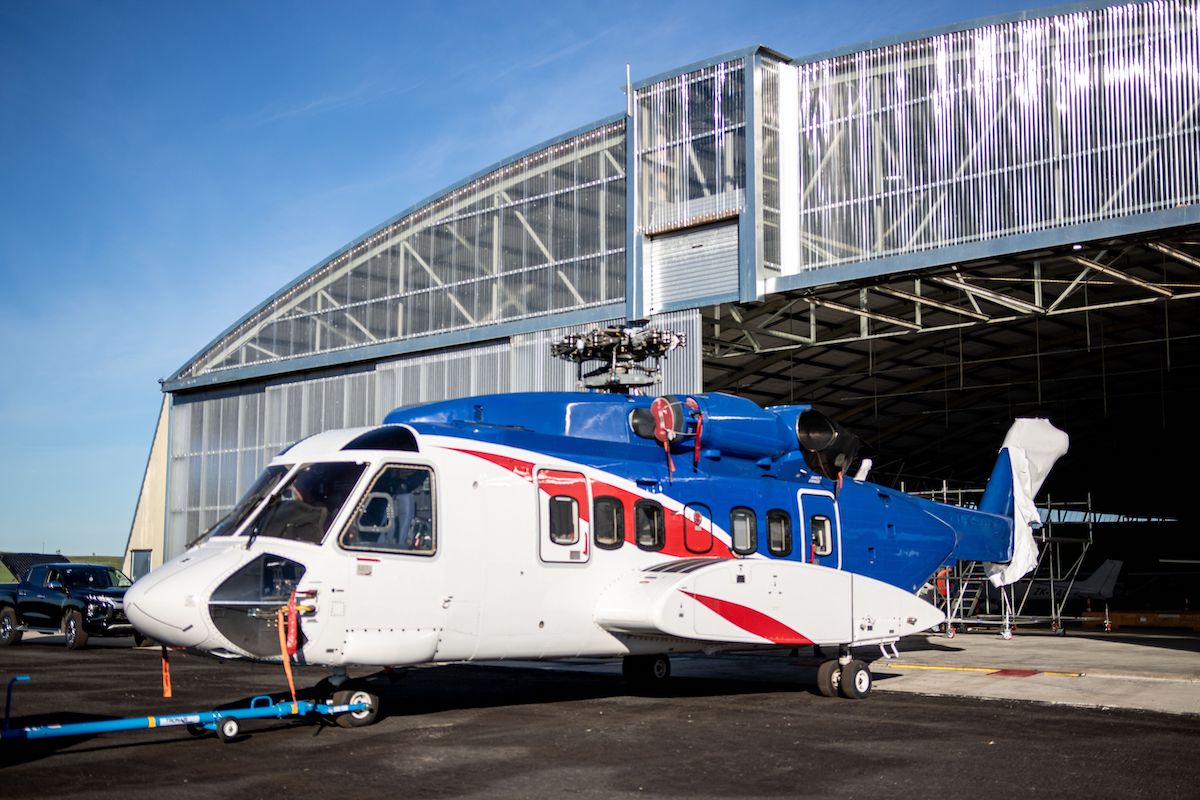
Rocket Lab plans the first attempt to catch one of its returning small satellite boosters by helicopter after a launch later this month, nearly three years after the company announced its mid-air recovery and reuse concept.
The next Rocket Lab mission is set to lift off from New Zealand no earlier than April 19 with 34 small satellites from commercial operators Alba Orbital, Astrix Astronautics, Aurora Propulsion Technologies, E-Space, Unseenlabs, and Swarm Technologies, the company said April 5.
The mission will mark a big leap forward for Rocket Lab’s booster reuse program, following three rocket recoveries from the Pacific Ocean. Those splashdowns under parachutes were experiments designed to gather data on the structural loads, heating, and deceleration the Electron booster encounters during re-entry and descent.
The next mission will bring into the mix the final piece of Rocket Lab’s recovery concept. A customized Sikorsky S-92 helicopter will attempt to snare the carbon fiber booster stage suspended under a parachute around 170 miles (280 kilometers) off the coast of New Zealand.
Catching the booster in mid-air will prevent it from reaching the ocean, eliminating the risk of hardware corrosion or damage from splashdown in salt water, and easing refurbishment work required to make the rocket suitable to launch again.
The Electron booster is powered by nine kerosene-fueled Rutherford engines. The rocket, standing nearly 60 feet (18 meters) tall on the launch pad, also has a single-engine second stage, and a third stage capable of placing small payloads into orbit.
“We’re excited to enter this next phase of the Electron recovery program,” said Peter Beck, founder and CEO of Rocket Lab, a U.S.-based company originally founded in New Zealand.

Rocket Lab has also dropped replica, or mock-up, booster stages from a helicopter. In those tests, a second helicopter swooped in to snag the parachute’s drogue line with a grappling hook at the end of a long boom. A similar method will be employed with the real Electron booster later this month.
“We’ve conducted many successful helicopter captures with replica stages, carried out extensive parachute tests, and successfully recovered Electron’s first stage from the ocean during our 16th, 20th, and 22nd missions. Now it’s time to put it all together for the first time and pluck Electron from the skies,” Beck said in a statement.
Rocket Lab wants to recover and reuse the first stage from its Electron small satellite launcher to achieve a more rapid cadence of launches, limiting pressure on the company’s factories in Auckland, New Zealand, and Long Beach, California.
“Trying to catch a rocket as it falls back to Earth is no easy feat, we’re absolutely threading the needle here, but pushing the limits with such complex operations is in our DNA,” Beck said. “We expect to learn a tremendous amount from the mission as we work toward the ultimate goal of making Electron the first reusable orbital smallsat launcher and providing our customers with even more launch availability.”
On the upcoming mission, the Electron rocket’s kerosene-fueled first stage will shut down and separate from the rocket’s second stage about two-and-a-half minutes after liftoff, coast to the high point of its trajectory, then descend back into the atmosphere. Control thrusters will flip the booster around to fly tail first, similar to the jets used on SpaceX’s reusable Falcon 9 rocket booster.
SpaceX’s Falcon 9 is the only other operational rocket with a reusable booster stage. The Falcon 9 booster performs propulsive landings on an offshore platform, or at an onshore SpaceX landing pad near the launch site, depending on mission requirements.
Rocket Lab aims to be the second company to achieve booster reusability, a goal the company announced in August 2019. The Electron is much smaller than the Falcon 9, standing about one-quarter the height of SpaceX’s workhorse rocket, with just 1% of the Falcon 9’s payload lift capability.
Rocket Lab says its Electron booster has a heat shied to protect its nine main engines from re-entry temperatures up to 4,350 degrees Fahrenheit (2,400 degrees Celsius) as the vehicle slows from its top speed of nearly 5,150 (8,300 kilometers per hour).

After withstanding the heat of re-entry, the rocket will deploy a drogue parachute before opening its main parachute at an altitude of nearly 20,000 feet (6,000 meters). The chute will slow the rocket’s velocity to around 22.3 mph (10 meters per second), according to Rocket Lab.
Then the Sikorsky S-92 helicopter will move in to capture the parachute line. Once the rocket is secure hanging under the helicopter, the Sikorsky will head for shore and transport the booster back to a Rocket Lab facility in New Zealand.
The customized twin-engine helicopter is a heavy-duty aircraft typically used in oil and gas transport and search and rescue operations.
The Rocket Lab second stage and kick stage will continue into orbit with the mission’s 34 satellites. The payloads include picosatellites and CubeSats for technology demonstrations, maritime surveillance, and commercial data relay services.
Email the author.
Follow Stephen Clark on Twitter: @StephenClark1.
